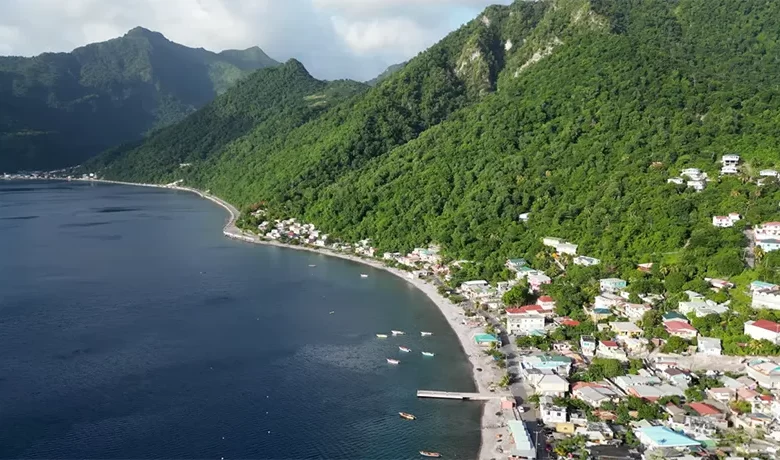South of Dominica

The South of Dominica encompasses Saint Luke Parish and Saint Mark Parish, a region rich in cultural and natural beauty. It is bordered by both the Caribbean Sea and the Atlantic Ocean. It offers diverse landscapes and a deep historical narrative. This area is home to several notable villages, such as Bellevue Chopin, Giraudel, Grand Bay, Soufrière, Pointe Michel, Tête Morne, Dubuc, Stowe, Fond St. Jean and Bagatelle, each contributing to the vibrant cultural fabric of the island.
Significance of the South of Dominica
Its rich cultural and historical landmarks highlight the significance of the South of Dominica. The Old Mill Cultural Centre, near Canefield, is a key historical site transformed into a vibrant hub for arts and cultural activities. In Roseau, situated in the southwest, Fort Young Hotel blends historical charm with modern luxury, offering a window into Dominica’s colonial past. Nearby, the Botanic Gardens provide a tranquil setting, showcasing the island’s diverse plant life. The Neg Mawon Emancipation Monument is a powerful reminder of Dominica’s history of resistance and resilience, while the Windsor Park Sports Stadium hosts local and international sporting events. Overlooking the capital, Morne Bruce offers panoramic views that capture the island’s natural beauty and historical significance.
In Grand Bay, often called the “Cultural Capital” of Dominica, the island’s rich traditions come alive through festivals, music, and dance. The South of Dominica is also known for the Geneva Uprising. This significant historical event highlights the region’s role in the fight for social justice and equality on the island.
Natural Attractions in the South of Dominica
Dominica’s South is known for its breathtaking natural beauty, with attractions like the Campbell Nature Trail near Giraudel and the Soufriere Scotts Head Marine Reserve. The village of Scotts Head is a major attraction, offering fantastic snorkelling and scuba diving opportunities in the Scotts Head Peninsula, where the Caribbean Sea meets the Atlantic Ocean, and hiking on the Scotts Head Trail and Segment #1 of the Waitukubuli National Trail.
Additionally, the region is dotted with historical estates such as Bois Cotlette Estate, Fontaine Estate and Magua Estate, Liberty Estate, Mount Lofty Estate, Petite Coulibri Estate, Gommier Estate and Geneva Estate. Magua Estate was the residence of the distinguished anthropologist Douglas Macrae Taylor, who conducted extensive research on the Indigenous people of Dominica, Kalinago. These estates offer a glimpse into the island’s colonial past and are essential sites for Dminica’s Tourism Industry.
Coastal and Marine Environment
The South of Dominica is characterized by its unique coastal environment, creating a diverse marine ecosystem crucial for local livelihoods and tourism. The beaches along the southern coast, such as Soufriere Bay Beach and Champagne Reef, are renowned for their natural beauty and are popular spots for locals and visitors. Tete Morne and Morne Anglais mountains offer stunning panoramic views of the surrounding seas, further enhancing the region’s appeal.
Connectivity and Future Potential
Victoria Street, the Bellevue Chopin Main Road, Pichelin Main Road and Grand Bay Main Road are key routes connecting the southern villages to Roseau and other parts of the island. These roads enhance accessibility to the region’s many attractions, making it easier for visitors to explore the South of Dominica. The southern region holds immense potential like exploring opportunities in Dominica’s Geothermal Features and developing Dminica’s Tourism Industry, especially with its rich cultural history, vibrant local communities, and stunning natural landscapes.
As Dominica continues to develop its tourism infrastructure, the South of Dominica is expected to play a crucial role in attracting visitors seeking to experience the island’s unique blend of culture, history, and natural beauty.




